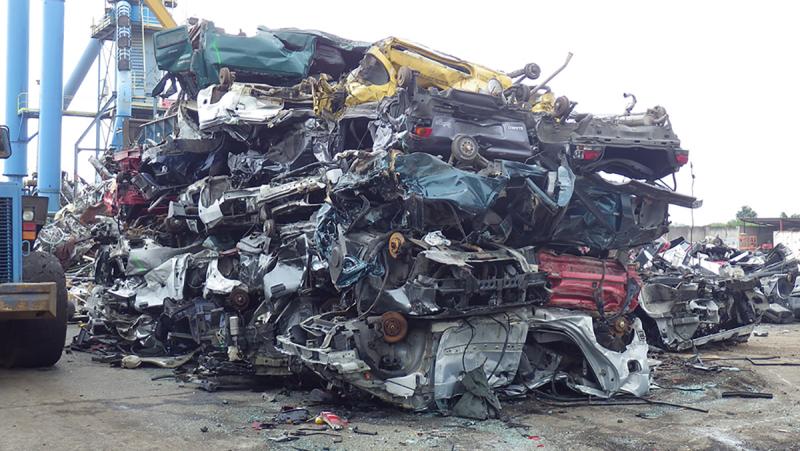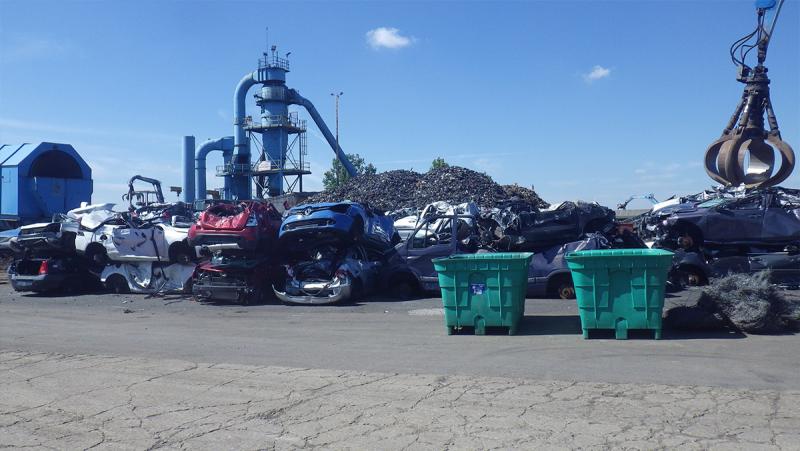Products
Product pages available in
EN - DE - FR - ES
Sustainability
News, events and stories
Steel recycling and sustainability go hand-in-hand
ArcelorMittal’s recycling strategy is an integral part of our sustainability strategy. We believe that steel will continue to be the dominant material in vehicles for the foreseeable future. And one of the major reasons for this is the unmatched properties that make steel the most reusable material in the world. That is not just a theory, it is working in practice as the high effective recycling rates for steel show.
In theory, every material can be reused, remanufactured, and/or recycled. However, the energy and money needed to recycle some materials, such as composites, is so great that they are recycled much less than metals like steel. That is why ArcelorMittal talks about ‘effective recycling’ rather than recyclability.
All steel that is used in a vehicle today will be fully recycled once the vehicle reaches its end of life - which is unmatched by any other material used for automotive. The rate of recycled steel content in new vehicles remains relatively low because there is not enough scrap available to produce all the steel we need.
Recycled content – a misleading metric
Carmakers are keen to show that their vehicles contain a high level of recycled materials. This is easily measurable and can be used by consumers to rank one OEM against another. However, the level of effective recycling of their vehicles, when the reach their end of life, is less important to carmakers because it is less easy to measure and it will happen at an indeterminate time in the future.
For steelmakers, and sustainable growth in general, the focus on recycled content is misleading. All steel that is used in a vehicle today will be fully recycled once the vehicle reaches its end of life. That is happening with the vehicles that are at the end of their useful life today.
In Europe, the steel recycling rate from end-of-life vehicles is 98 percent. That is largely due to the magnetic properties of steel which makes it very easy to collect with a simple magnet. Of the remaining two percent, around half is lost as fine dust in the shredding process. The remaining one percent is oxidised when the steel is melted in the electric arc furnace (EAF) or blast oxygen furnace (BOF).
The rate of recycled steel content in new vehicles remains relatively low because there is not enough scrap available to produce all the steel we need. According to Statista, 91.8 million motor vehicles were produced globally in 2019. This compares to 56.3 million in 1999. In just 20 years, production of new vehicles has increased by 163 percent which explains why we still need to use virgin materials to meet demand for new cars. And global demand for automotive solutions – and steel – is expected to continue growing for several decades.
Closing the loop
In some regions of the world, governments are planning actions to help ‘close the loop’ of product lifecycles. The goal of these initiatives is to ensure maximum value is extracted from raw materials, products, and waste. These actions will help to ensure that all available steel scrap is identified, collected, and recycled.
This fits with the ‘4R’ (Reduce, Reuse, Remanufacture and Recycle) concept of the circular economy where resources remain in use for as long as possible. Steel has a key advantage here. Not only do steel parts remain durable for longer, even in hard-wearing applications, it is easy to reduce their weight using advanced high strength steels (AHSS). And steel’s durability ensures components can be effectively reused, remanufactured, or recycled indefinitely.
This is true of the advanced and ultra high strength steels (AHSS and UHSS) which are deployed in today’s vehicles. While these steels contain more alloys, the alloy content is very low. These elements are oxidised when the scrap is melted in the EAF or BOF and have no impact on the performance of the new steel produced.
Designing for recycling
There are things that carmakers and their suppliers can do to increase the efficiency of their recycling operations. For example, carmakers should avoid mixing the scrap produced from different steel grades. This avoids ‘downgrading’ after recycling and ensures a smoother process.
To maximise the quality of the scrap produced at the end of a vehicle’s life, OEMs need to design vehicles with this stage of the lifecycle in mind. Copper, for example, can remain in shredded scrap and it limits the range of products that can be created with the recycled steel. One solution is to reduce the amount of copper used. That can be done by substituting copper with aluminum in electrical motors and connecting wires. Aluminium is lighter and cheaper than copper and has no impact on the quality of ferrous scrap.
During serial production, carmakers can significantly reduce scrap and increase their sustainability using ‘advanced nesting’ and laser welded blanks. This technique optimizes steel usage and significantly reduces costs without affecting a part’s mechanical properties. ArcelorMittal works with carmakers through co-engineering projects to help them optimize part design and reduce scrap during production.
Preparing for higher scrap levels
We know that ferrous scrap resources will increase over time as more and more vehicles reach their end of life. That is why we are transforming our steelmaking processes to use more scrap than ever before. ArcelorMittal is rolling out several projects which use a new technology that reduces CO2 emissions and increases the proportion of scrap that can be used in the BOF. Our mills in Bremen and Eisenhüttenstadt (Germany) will be the first ArcelorMittal sites to be equipped.
The new technology is also compatible with direct reduced iron (DRI) made via the green hydrogen route. This will become possible once affordable green hydrogen is available in sufficient volumes and will help ArcelorMittal reach its goal of carbon-neutral steelmaking by 2050.










